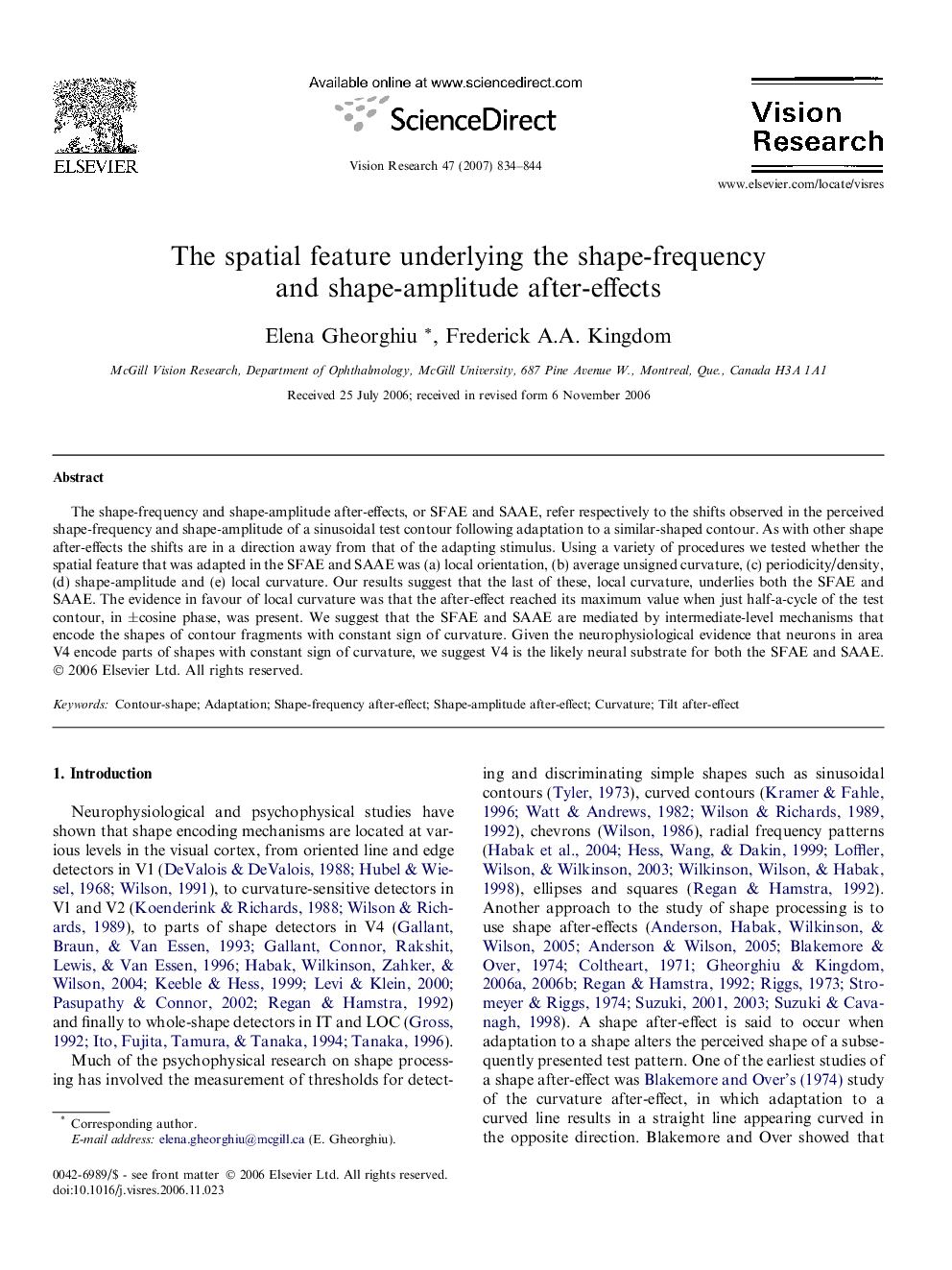| Article ID | Journal | Published Year | Pages | File Type |
|---|---|---|---|---|
| 4035856 | Vision Research | 2007 | 11 Pages |
The shape-frequency and shape-amplitude after-effects, or SFAE and SAAE, refer respectively to the shifts observed in the perceived shape-frequency and shape-amplitude of a sinusoidal test contour following adaptation to a similar-shaped contour. As with other shape after-effects the shifts are in a direction away from that of the adapting stimulus. Using a variety of procedures we tested whether the spatial feature that was adapted in the SFAE and SAAE was (a) local orientation, (b) average unsigned curvature, (c) periodicity/density, (d) shape-amplitude and (e) local curvature. Our results suggest that the last of these, local curvature, underlies both the SFAE and SAAE. The evidence in favour of local curvature was that the after-effect reached its maximum value when just half-a-cycle of the test contour, in ±cosine phase, was present. We suggest that the SFAE and SAAE are mediated by intermediate-level mechanisms that encode the shapes of contour fragments with constant sign of curvature. Given the neurophysiological evidence that neurons in area V4 encode parts of shapes with constant sign of curvature, we suggest V4 is the likely neural substrate for both the SFAE and SAAE.
